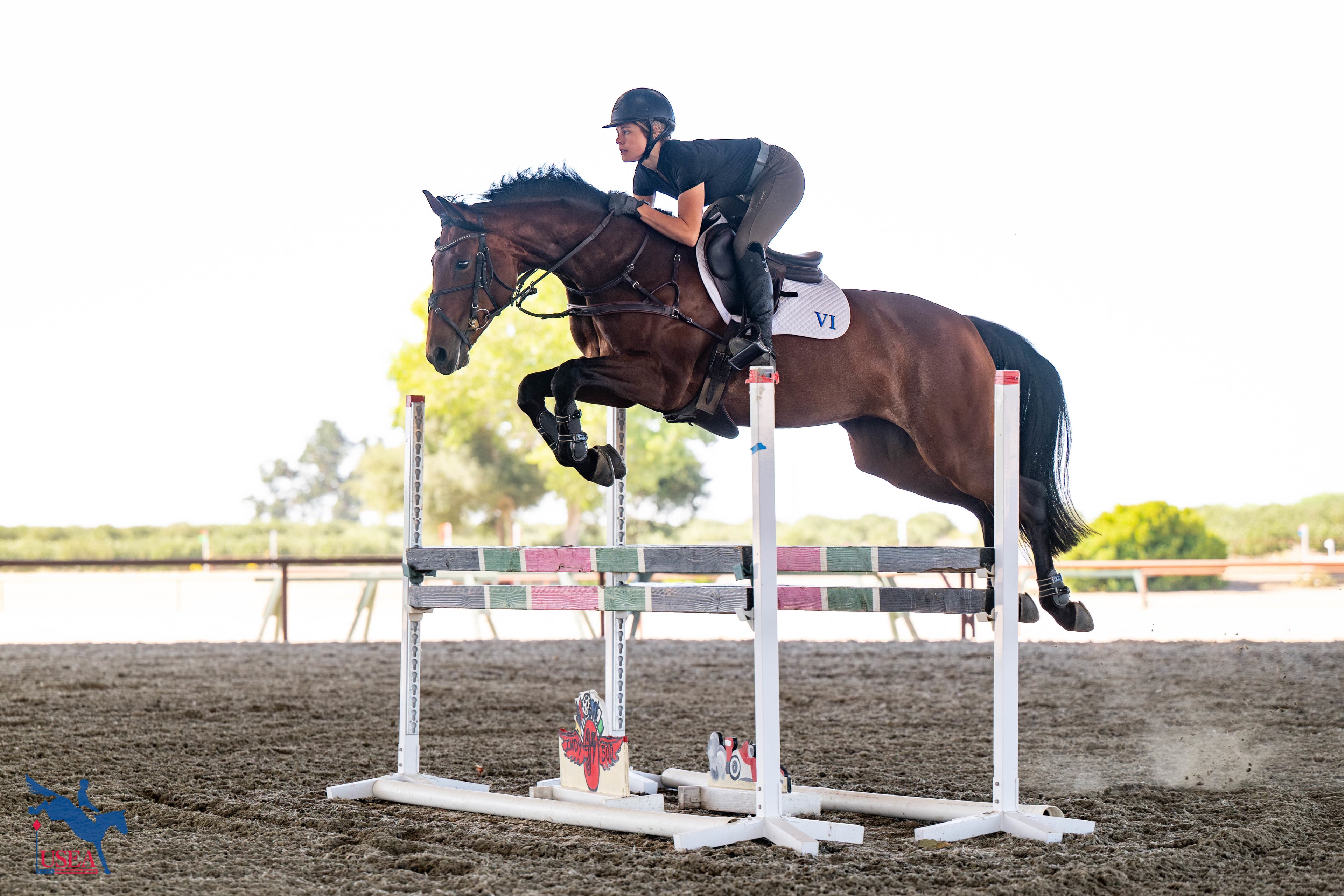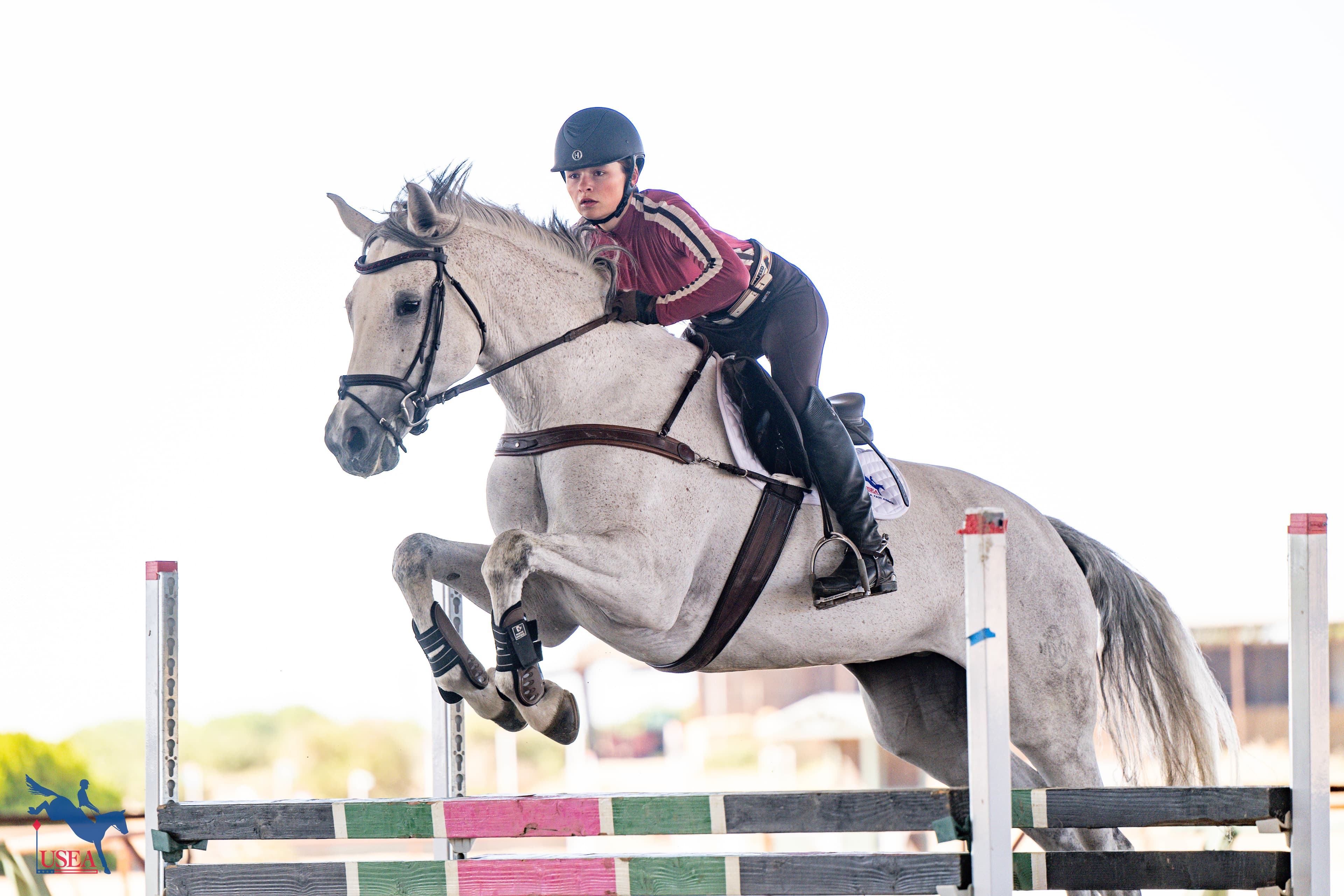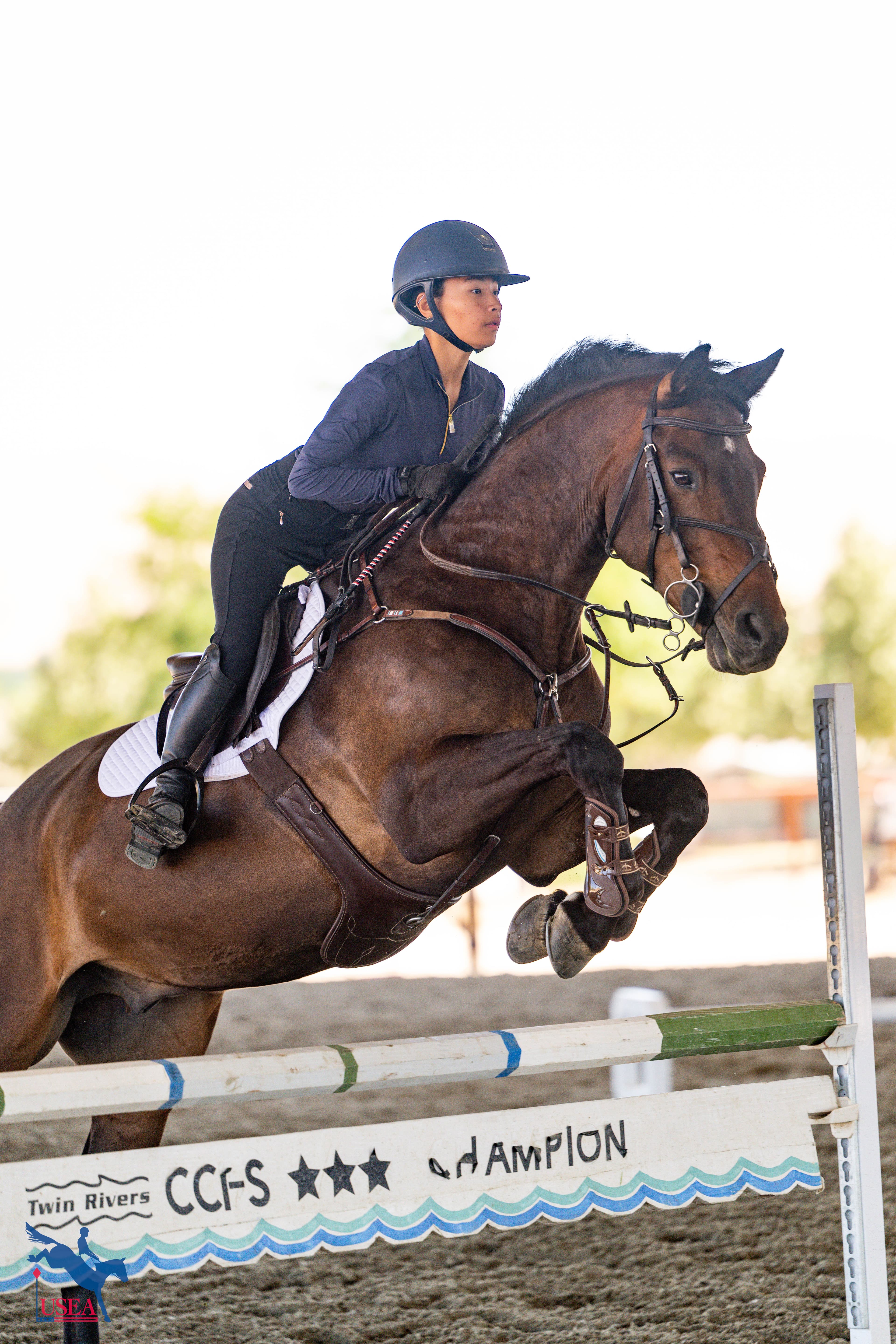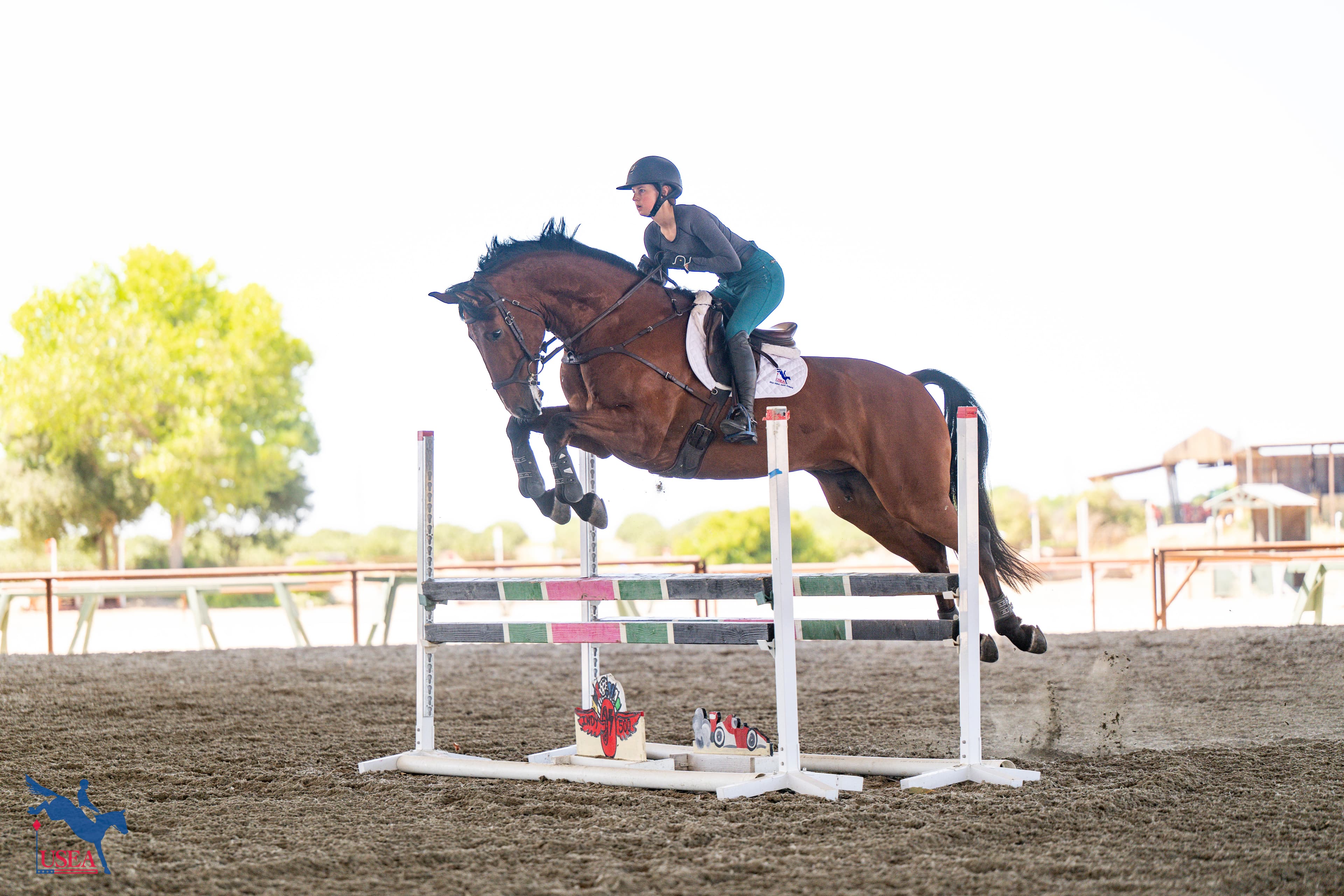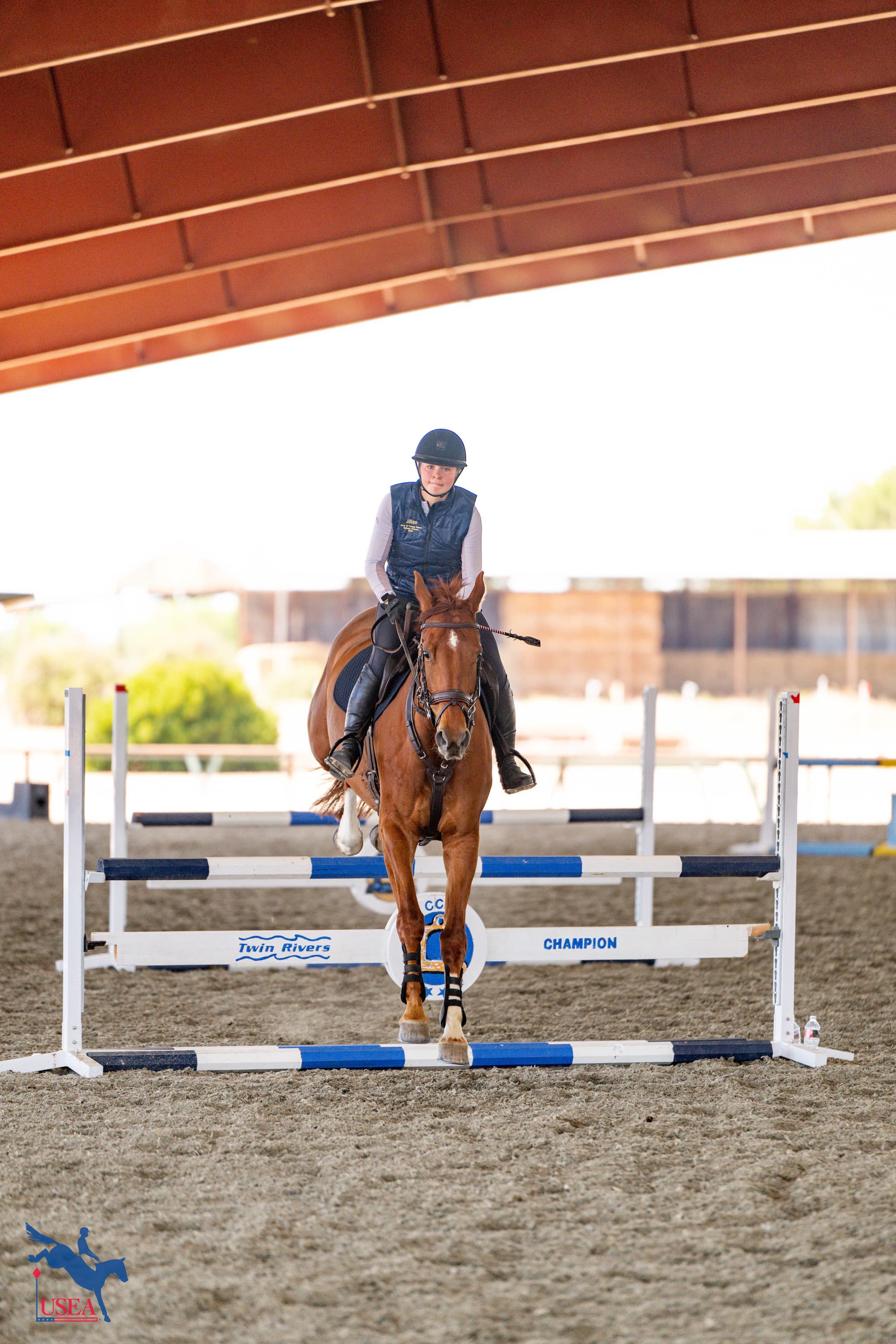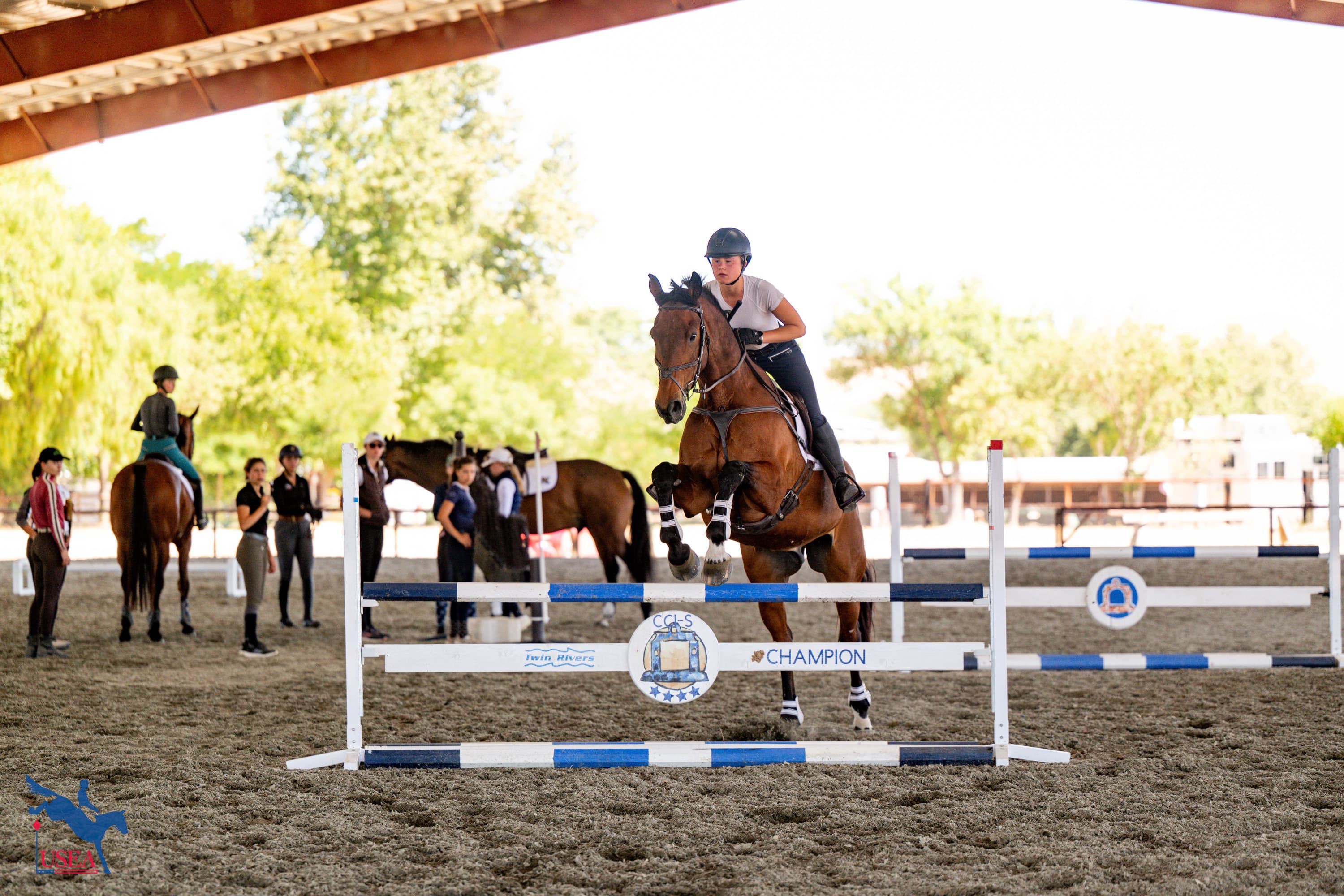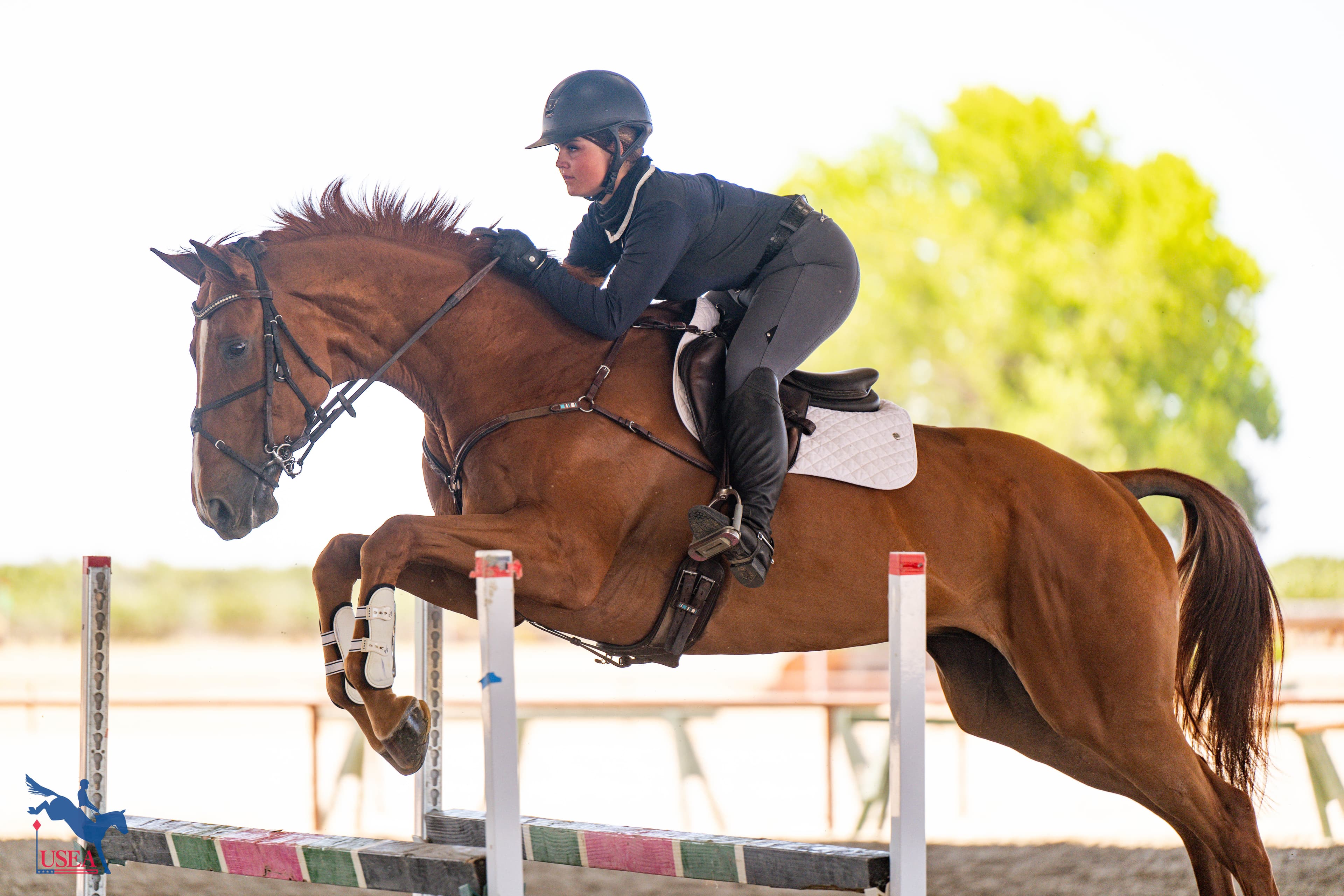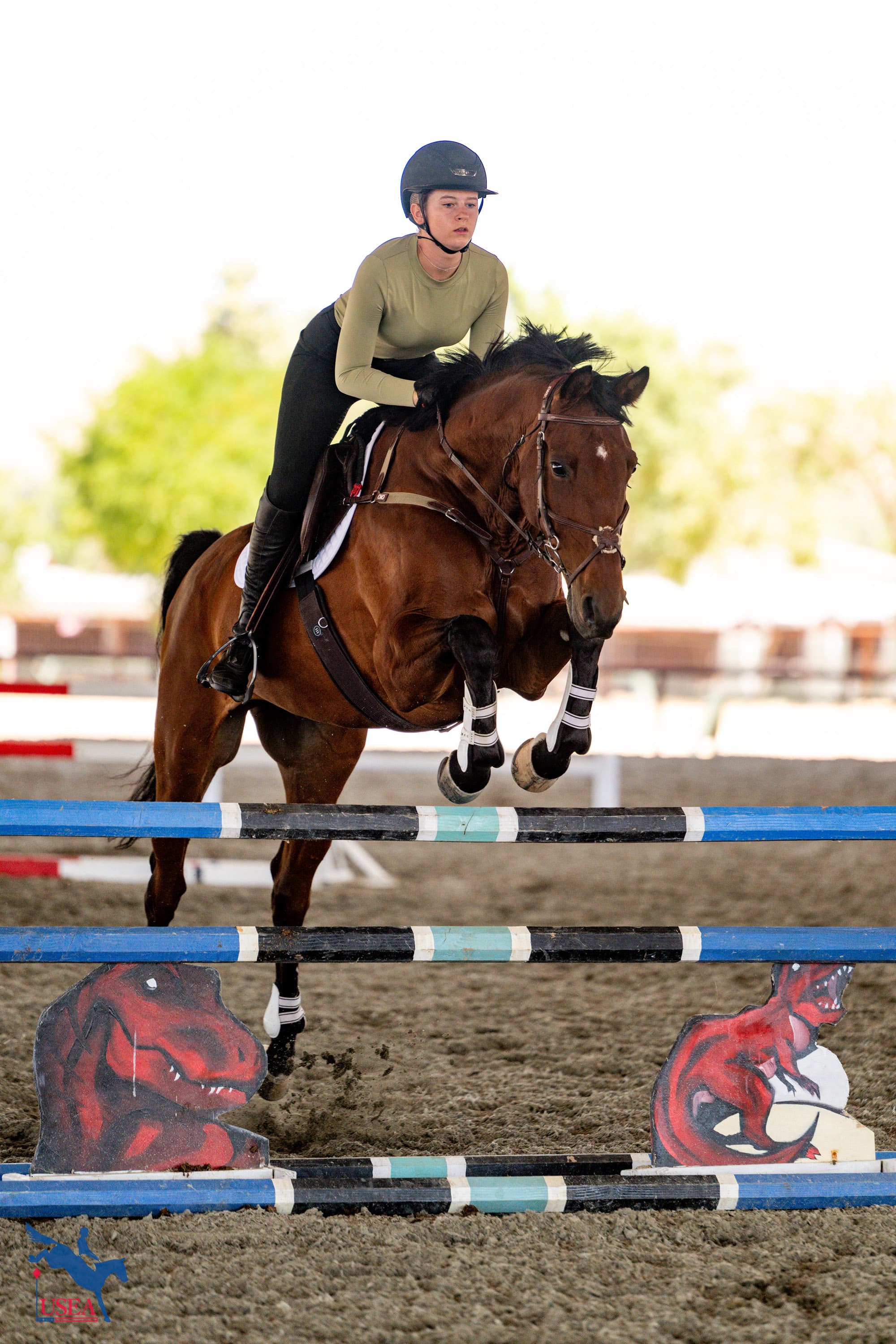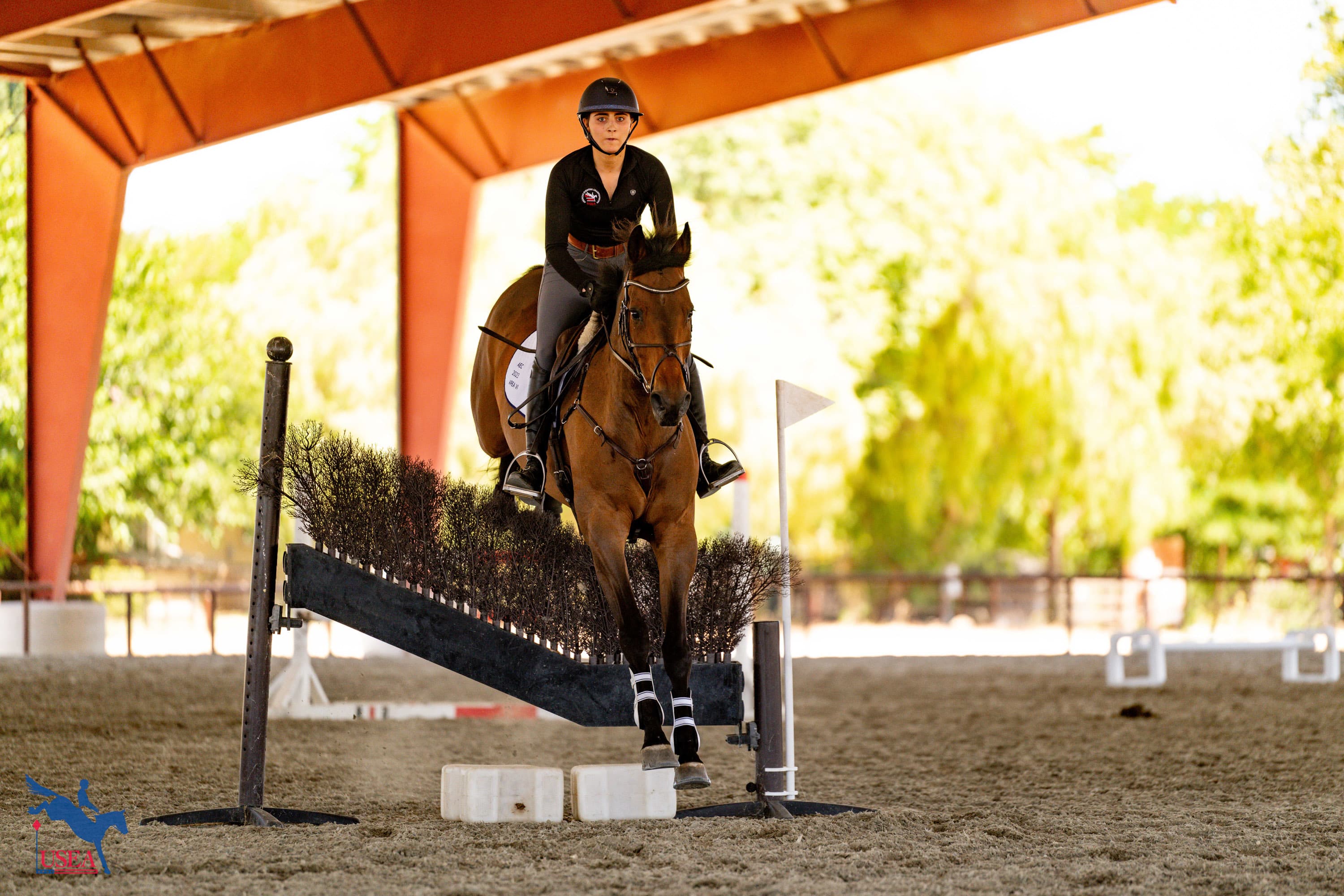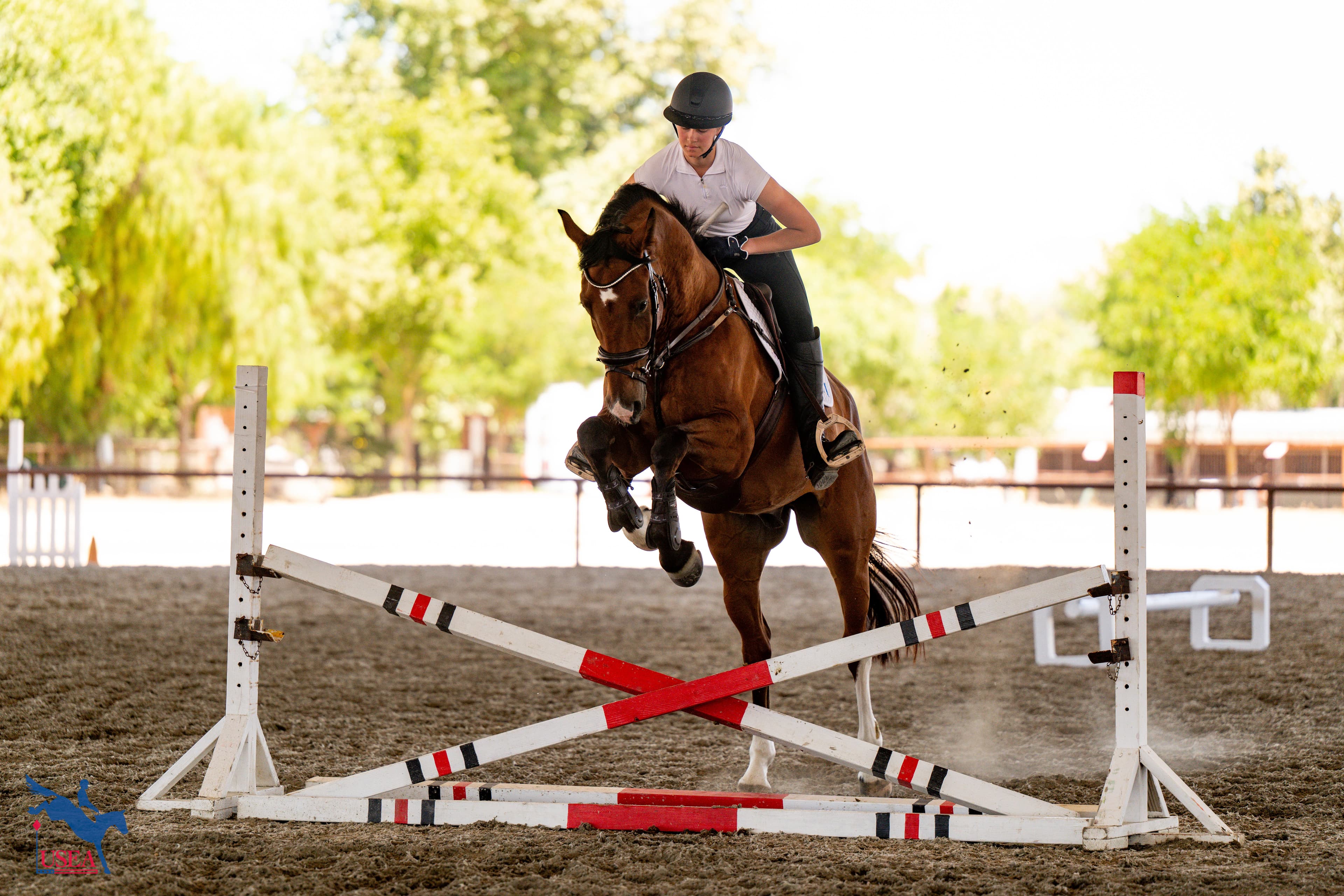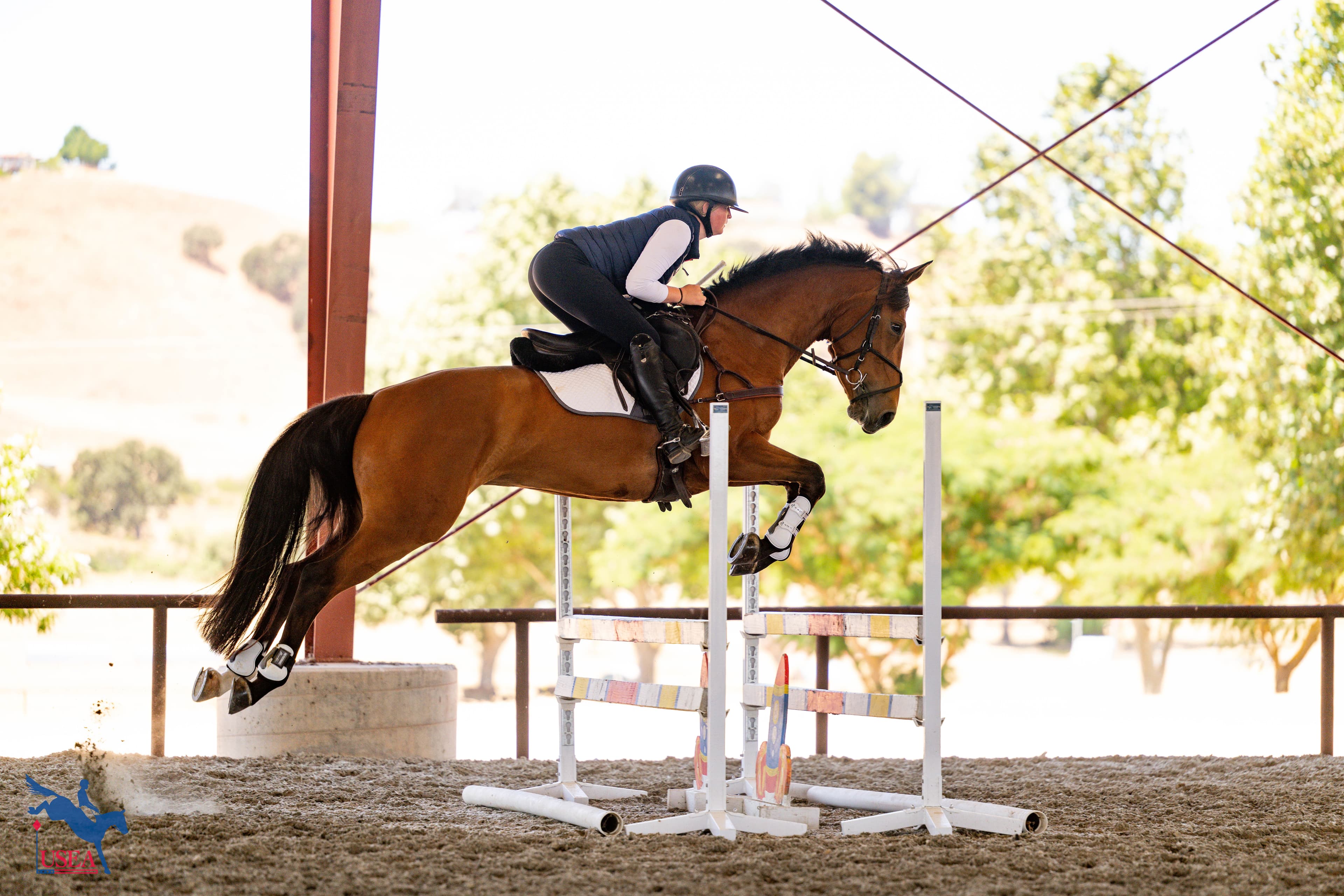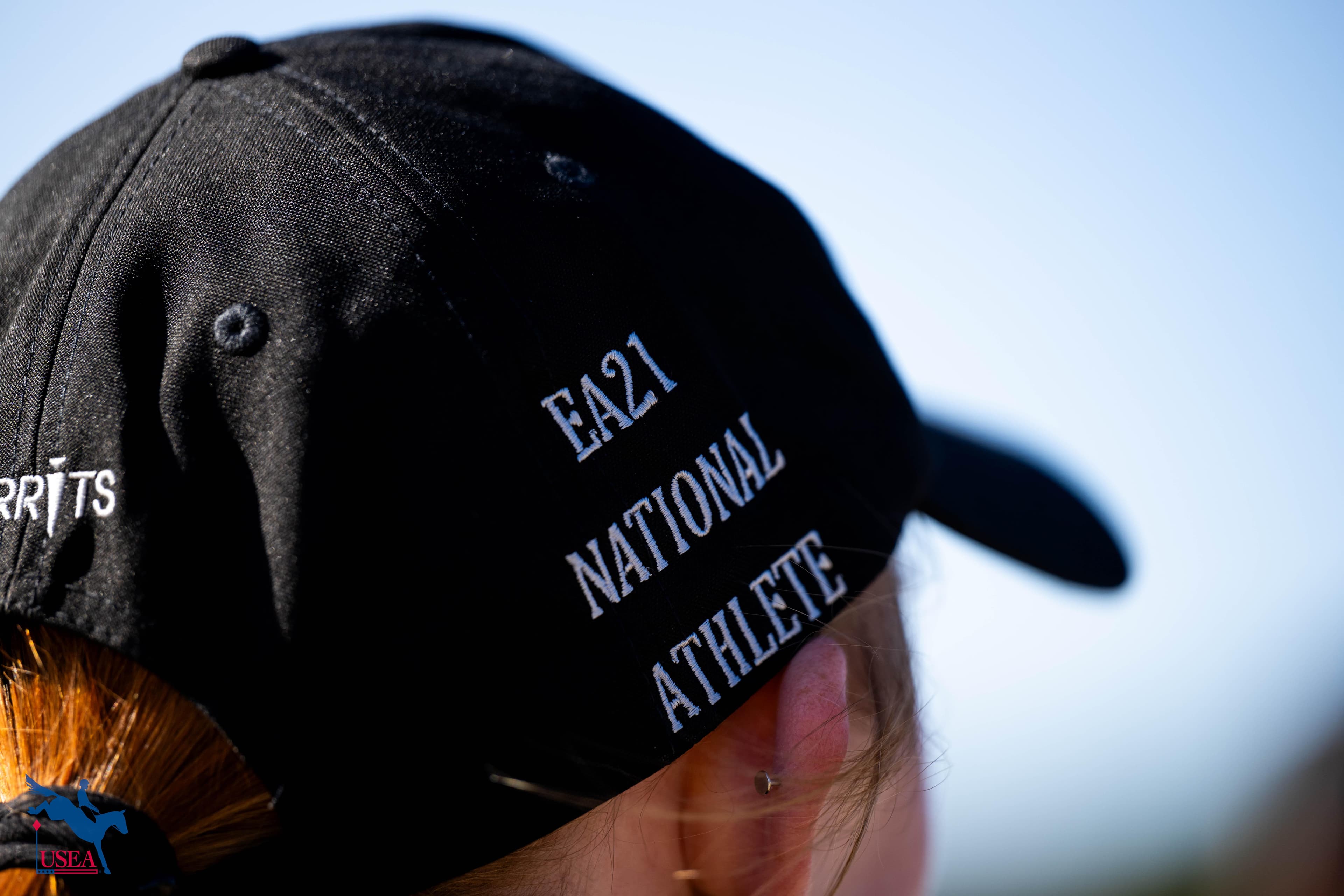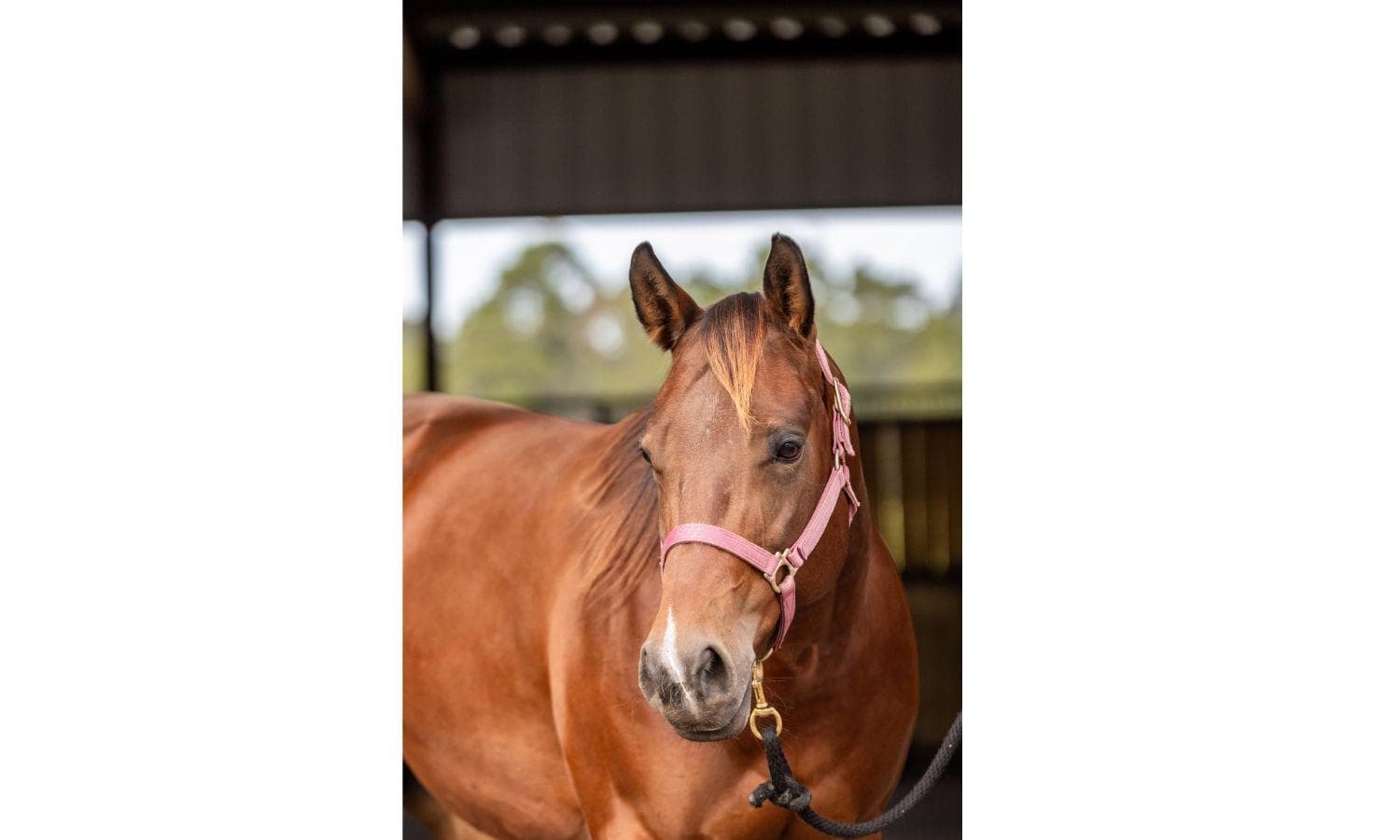Brown Encourages EA21 Athletes to 'Ride the Line' During Day 2 of EA21 West Coast I Clinic
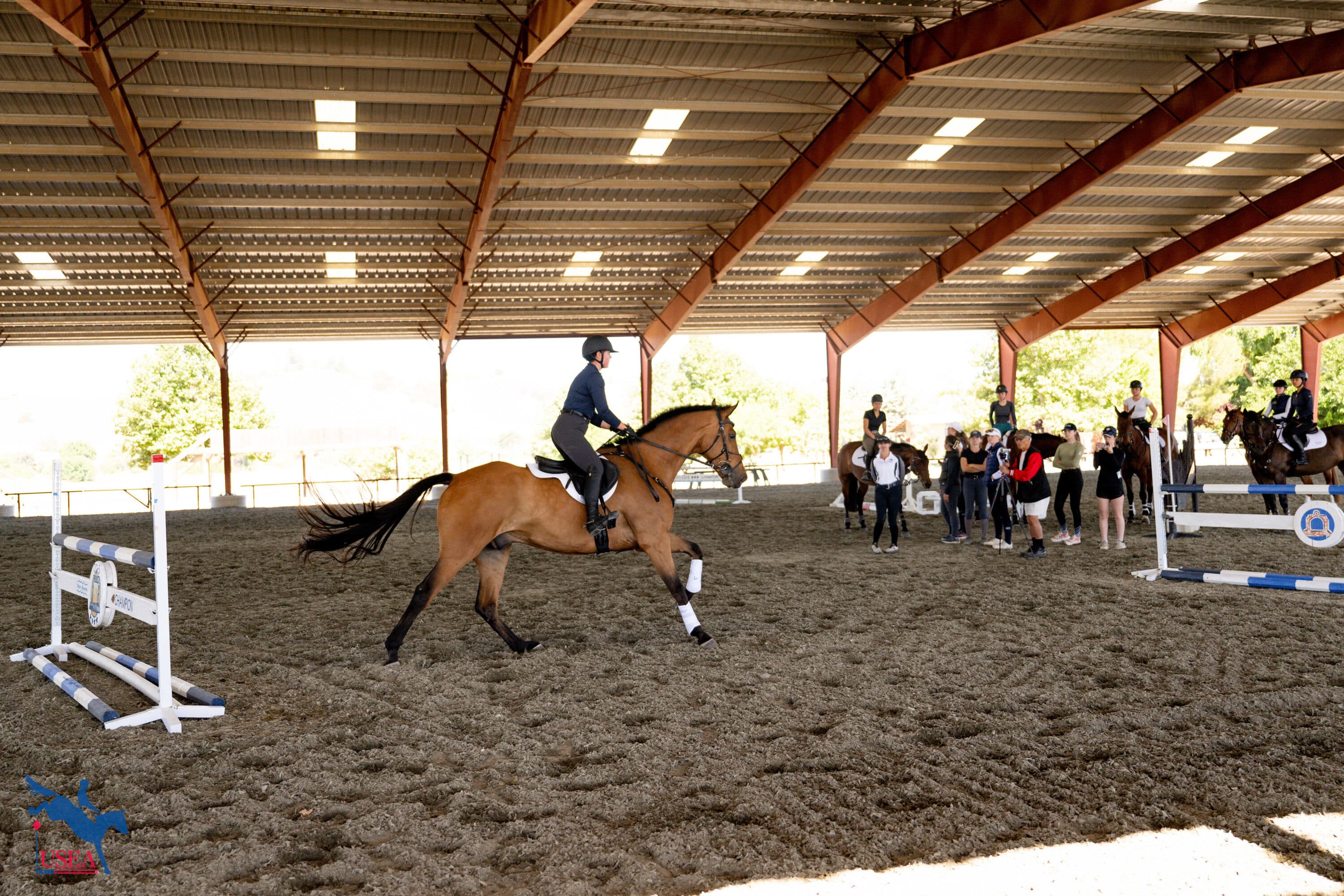
Paso Robles, Calif.—June 26—The lesson plans for jumping day of the USEA Emerging Athlete U21 (EA21) West Coast I Regional Clinic proved to be just as consistent as day one. The moral of the day? Ride the line.
After a morning lecture discussing various jumping positions and types of jump shapes, riders headed to the Twin Rivers Ranch indoor arena for a day of show jumping and cross-country exercises. Including some cross-country elements on jumping day was a new twist for the Regional Clinics.
“We're trying to really instill the same curriculum every year, so you're trying to figure out how to keep it fresh, because you've got riders that this is their third year in the program,” EA21 Coach Rebecca Brown remarked.
Brown set up a series of bending and angled lines throughout the arena to continue the theme of effective riding begun from the day before. Some were made up of conventional show jumps while others were brush jumps to mimic cross-country elements.
Athletes rode their own horses today but began with an unguided warm up again before being called to discuss with Brown their warm up check list. Just as the previous day, accuracy in the line would prove to be important in the lesson so effective riding and preparation in the warm up would set horses and riders up for success.
Every group, regardless of level, began with a vertical in the center of ring with cavalettis spaced three strides away on each side. Keeping appropriate balance for the horse and riding a square turn to maintain straightness was instruction Brown gave to every group.
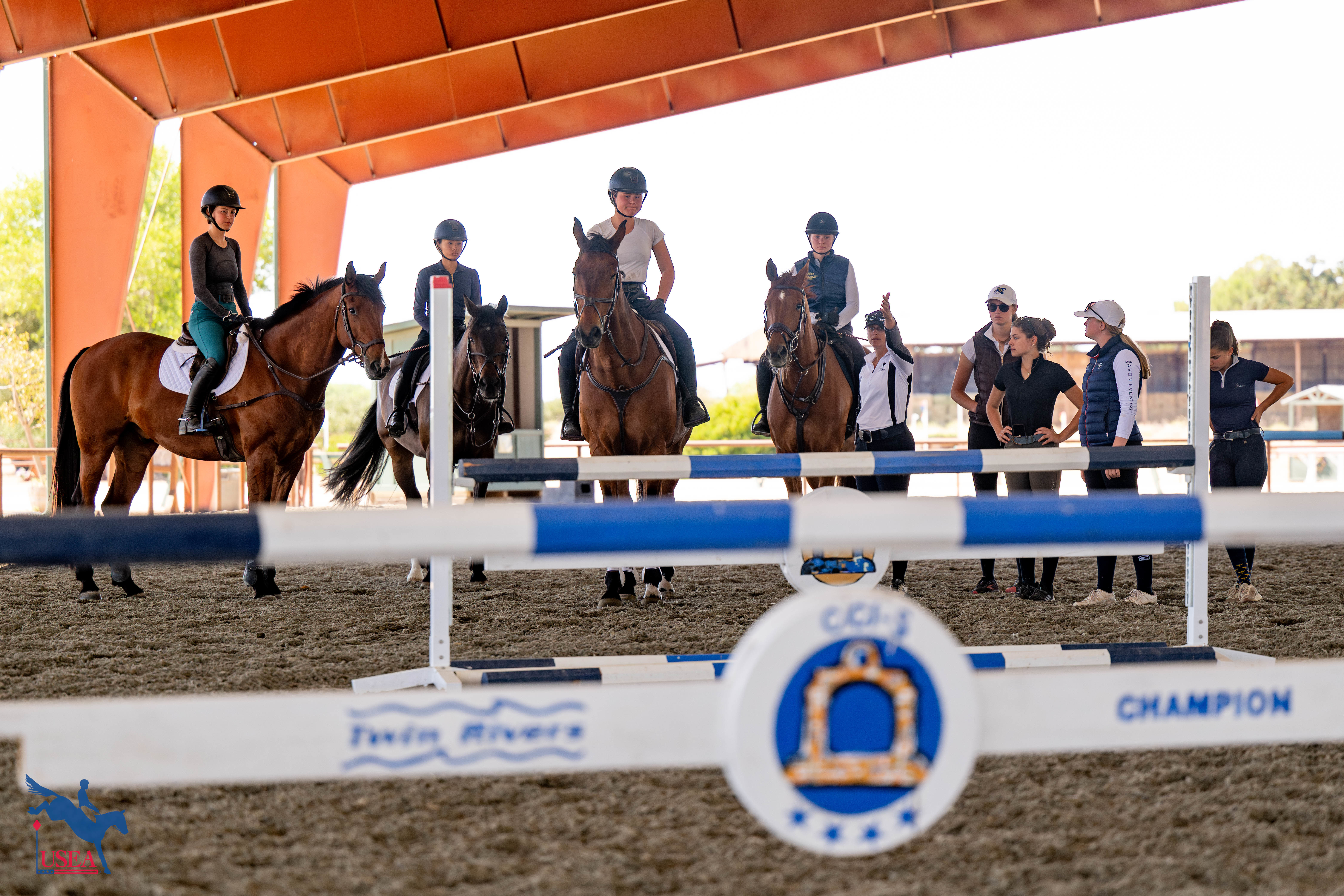
“You want to put the balance on the outside hind leg so the inside shoulder frees up,” she would say.
After going through the cavaletti exercise, depending on the level, participants were asked to ride through certain elements before stringing the full course together. Comprised of multiple bending lines such as an S-curve of vertical-vertical-oxer and a bending line of an oxer to a two-stride angle combination, preparation and commitment to the line proved to be a challenge.
In the first group comprised of Julia Beauchamp Crandon, Brooke Corsaut, and Taylor McFall, it was the preparation of rhythm. McFall’s mount often fell behind her leg, and she had to work constantly to maintain a consistent power and rhythm without using speed as a crutch. Corsaut similarly suffered from a lack of rhythm in which a bit more speed helped create a positive forward thinking ride.
The second group of Lauren Crabtree, Jillian Mader, Soobin Oh, and Nadia Vogt had a mix of cheeky horses and steady mounts. Brown recommended landing and immediately giving those playful partners a job rather than landing and whoaing right away. She encouraged riders to use the back side of the fence as the front side of the next jump, making preparation a constant part of the course.
“It gets complicated if you make it complicated,” she said. “Don’t make it complicated.”
For the third group of Kayley Batt, Ella Garcia, and Fiona Holland, breathing and maintaining a quality, if slightly slower, rhythm proved to be their theme.
It is Garcia’s second time participating in the EA21 program, and Brown’s comments resonated deeply with her. “I am very excited and thankful to be here,” Garcia expressed. “I've really been able to resonate with [the training scale] this time around. Just being able to go back and read each level of it to just think, OK, I've got relaxation, I've got rhythm. Where is it going wrong? So I think the light bulb moment was just being able to say, take a breath.”
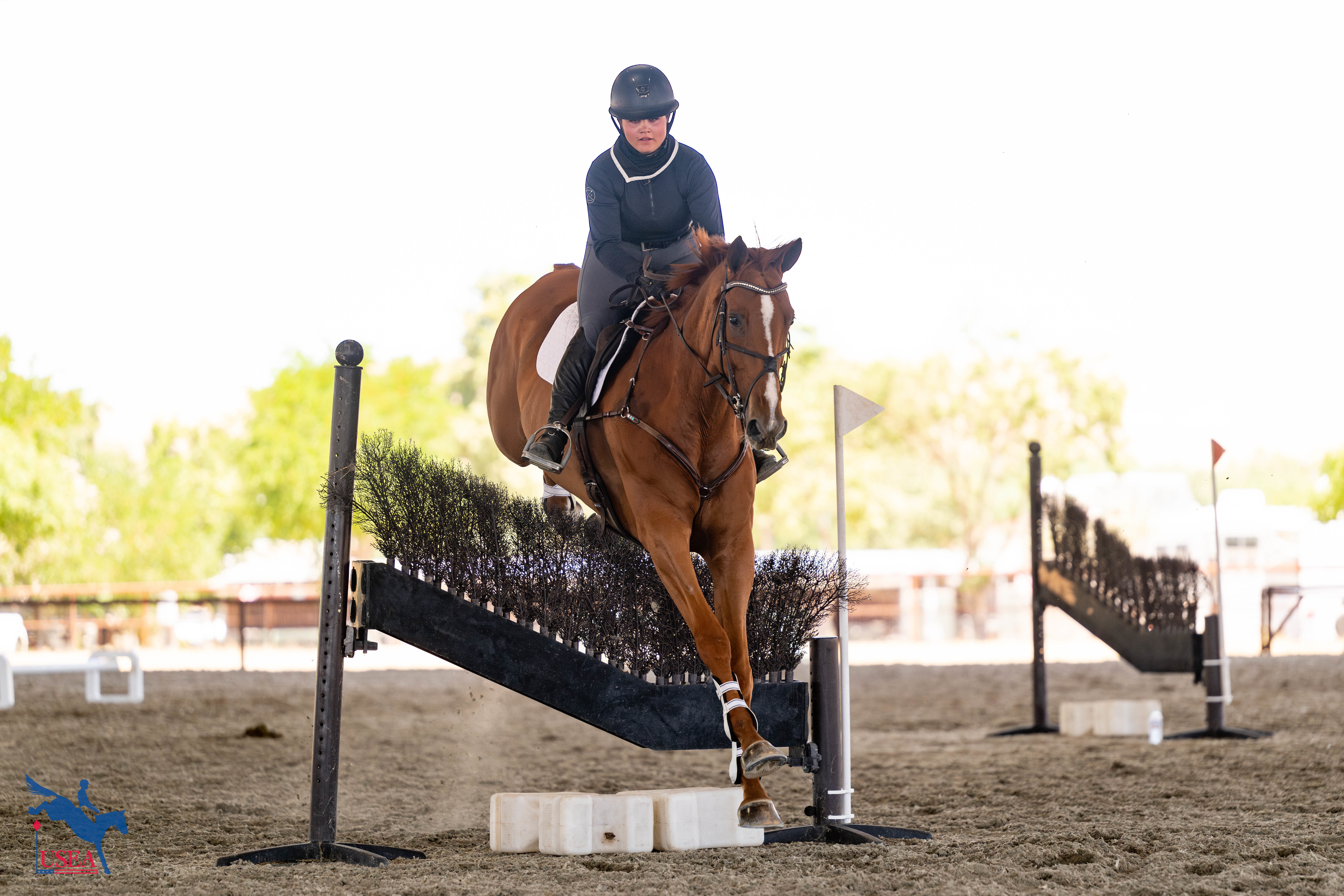
As with every group, once the course was completed successfully, the athletes finished their ride with a cross-country question. Brown set up an oxer bending on five strides to an angled two-stride combination to mimic an A, B, C combination on the cross-country course before asking riders to make a roll back to a shoulder brush set up by itself.
“Cross-country 101 is that when you are doing an oxer to angled combination, you are going to be much more worried about B and C rather then A but if you jump A well, B and C will be better.” Brown instructed. “How you approach determines your success.”
Especially on the greener horse, she had riders really square the turn to the A element of the oxer to maximize straightness, just like the corner before the leg yield in the dressage test of the day before. The building blocks put together throughout the two days showed in every rider being able to achieve a quality ride through a tricky combination.
Even the final group of the day, made up of Anna Weston Smith and Elsa Warble who had the greenest horses of the clinic in their young Novice mounts, were able to ride through the angled fences confidently and positively.
Next year the EA21 coaches will switch regions so this was Brown’s final year coaching the West Coast athletes.
“All of their trainers are good at home, of course, but it's unique to be able to come in this sort of setting with a different coach and really solidify your basics.” Brown said when asked about what it is like seeing repeat riders. “It's been really rewarding to watch the kids develop through this program, the ones that we've been able to see year after year.”
As a goal for young riders, the EA21 program seems to have gained more popularity as well. “It seems like people are understanding what [the program is] about, and it excites them. It's a good goal for kids in this age group, and they're quite motivated to make it an accomplishment for themselves. So if anything, the riders are getting stronger every year, and you can see the kids that have been in the camp for several years. You can watch them develop, and the feedback that we get is that they find it really useful to their education.”
The EA21 Regional Clinic concluded at Twin Rivers for the year. The next EA21 Regional Clinic will take place at Stable View in Aiken, South Carolina, on July 22-23.
The Participants:
West I | Twin Rivers Ranch | Paso Robles, California
- Kayley Batt
- Julia Beauchamp Crandon
- Lauren Crabtree
- Molly Duda (Scratch)
- Ella Garcia
- Fiona Holland
- Jillian Mader
- Taylor McFall
- Soobin Oh
- Nadia Vogt
- Elsa Warble
- Anna Weston Smith
- Brooke Corsaut (First alternate pulled from the waitlist)
- Waitlist: Lauren Bebb and Coco Ramkowsky
Don't forget to follow the USEA’s coverage on social media!
Facebook | Instagram | Twitter
About the USEA Emerging Athlete U21 Program (EA21)
The purpose of the USEA Emerging Athletes U21 Program (EA21) is to identify and provide consistent quality instruction to the next generation of elite event riders. The aim is to create a pipeline for potential team riders by identifying and developing young talent, improving horsemanship and riding skills, and training and improving skills and consistency.
The USEA Emerging Athletes U21 Program was launched in 2022 with a model of five summertime regional clinics taught by selected USEA Eventing Coaches Program (ECP) instructors, leading to a winter national camp consisting of selected Young Riders from the regional clinics. Athletes who are 21 years or younger, are current members of their USEA Young Rider Area program, and are established at the Training Level or higher, are eligible to apply for the EA21 program. Click here to learn more about the USEA EA21 Program.
The USEA would like to thank ARMA, Kerrits, PulseVet, Ride iQ, Sidelines Magazine, Schneiders Saddlery and #WeRideTogether for sponsoring the USEA Emerging Athletes U21 Program.
